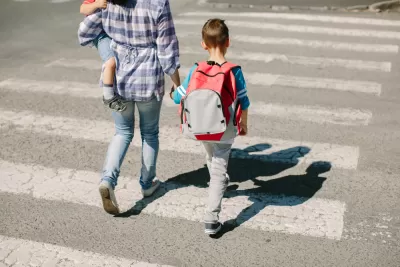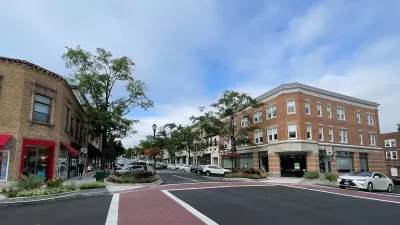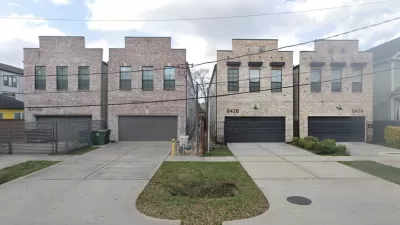In many rural and suburban Washington state communities, children who walk or bike to school don’t have access to safe, adequate pedestrian facilities.

Only 12 percent of Washington state’s K-8 students walk or bike to school, but of the students who do, many don’t have access to safe sidewalks, reports Mike Lindblom in The Seattle Times.
As Lindblom explains, “U.S. schools are often built on the suburban fringe, where formerly rural roads aren’t next to housing, or aren’t equipped with sidewalks or trails. More parents drive, which adds traffic, which makes the area more hostile to pedestrians.” In Washington State, “Residential sprawl, along with the desire to place campuses on large, inexpensive parcels, tends to result in sites distant from neighborhoods, or along high-speed rural roads.”
The article describes several examples of neighborhoods where parents and school administrators have identified dangerous routes. According to Lindblom, “There’s no database of inadequate school zones, but one barometer is that 165 school projects applied for state grants.” A $35 million state school routes fund received $200 million worth of requests from local communities. “Move Ahead Washington, the $17 billion package passed last year by the Legislature, is supposed to double the school safe routes fund, by adding $290 million through 2037. Pedestrian safety of all kinds will receive $1.1 billion, primarily financed by carbon taxes.”
FULL STORY: Where WA schoolchildren walk next to busy traffic

Planetizen Federal Action Tracker
A weekly monitor of how Trump’s orders and actions are impacting planners and planning in America.

Map: Where Senate Republicans Want to Sell Your Public Lands
For public land advocates, the Senate Republicans’ proposal to sell millions of acres of public land in the West is “the biggest fight of their careers.”

Restaurant Patios Were a Pandemic Win — Why Were They so Hard to Keep?
Social distancing requirements and changes in travel patterns prompted cities to pilot new uses for street and sidewalk space. Then it got complicated.

Platform Pilsner: Vancouver Transit Agency Releases... a Beer?
TransLink will receive a portion of every sale of the four-pack.

Toronto Weighs Cheaper Transit, Parking Hikes for Major Events
Special event rates would take effect during large festivals, sports games and concerts to ‘discourage driving, manage congestion and free up space for transit.”

Berlin to Consider Car-Free Zone Larger Than Manhattan
The area bound by the 22-mile Ringbahn would still allow 12 uses of a private automobile per year per person, and several other exemptions.
Urban Design for Planners 1: Software Tools
This six-course series explores essential urban design concepts using open source software and equips planners with the tools they need to participate fully in the urban design process.
Planning for Universal Design
Learn the tools for implementing Universal Design in planning regulations.
Heyer Gruel & Associates PA
JM Goldson LLC
Custer County Colorado
City of Camden Redevelopment Agency
City of Astoria
Transportation Research & Education Center (TREC) at Portland State University
Camden Redevelopment Agency
City of Claremont
Municipality of Princeton (NJ)





























